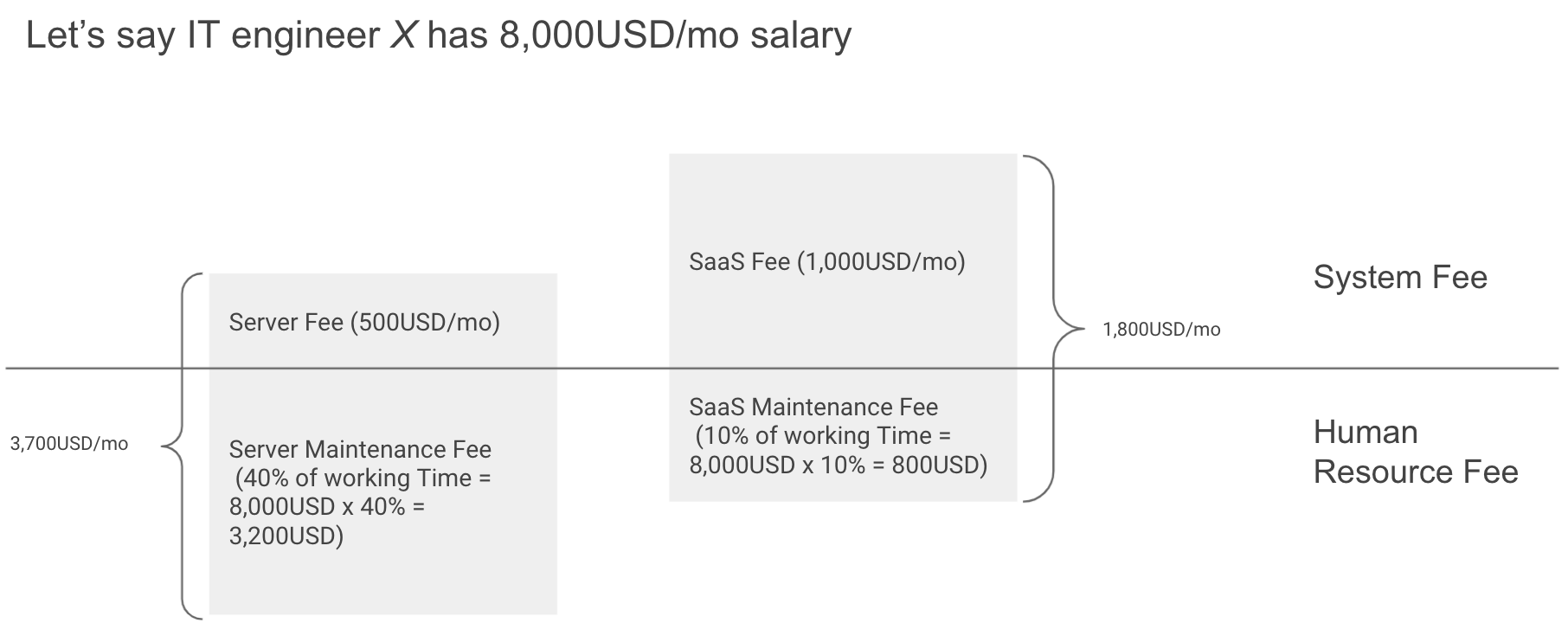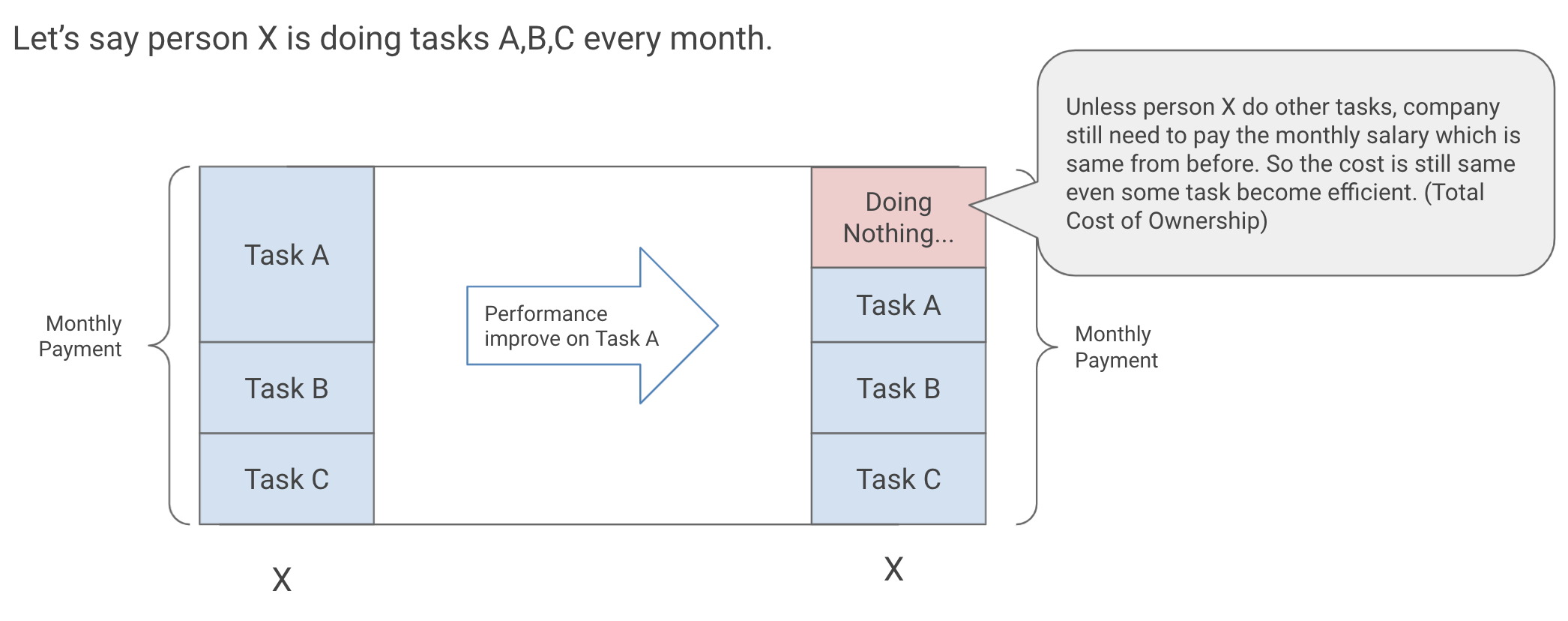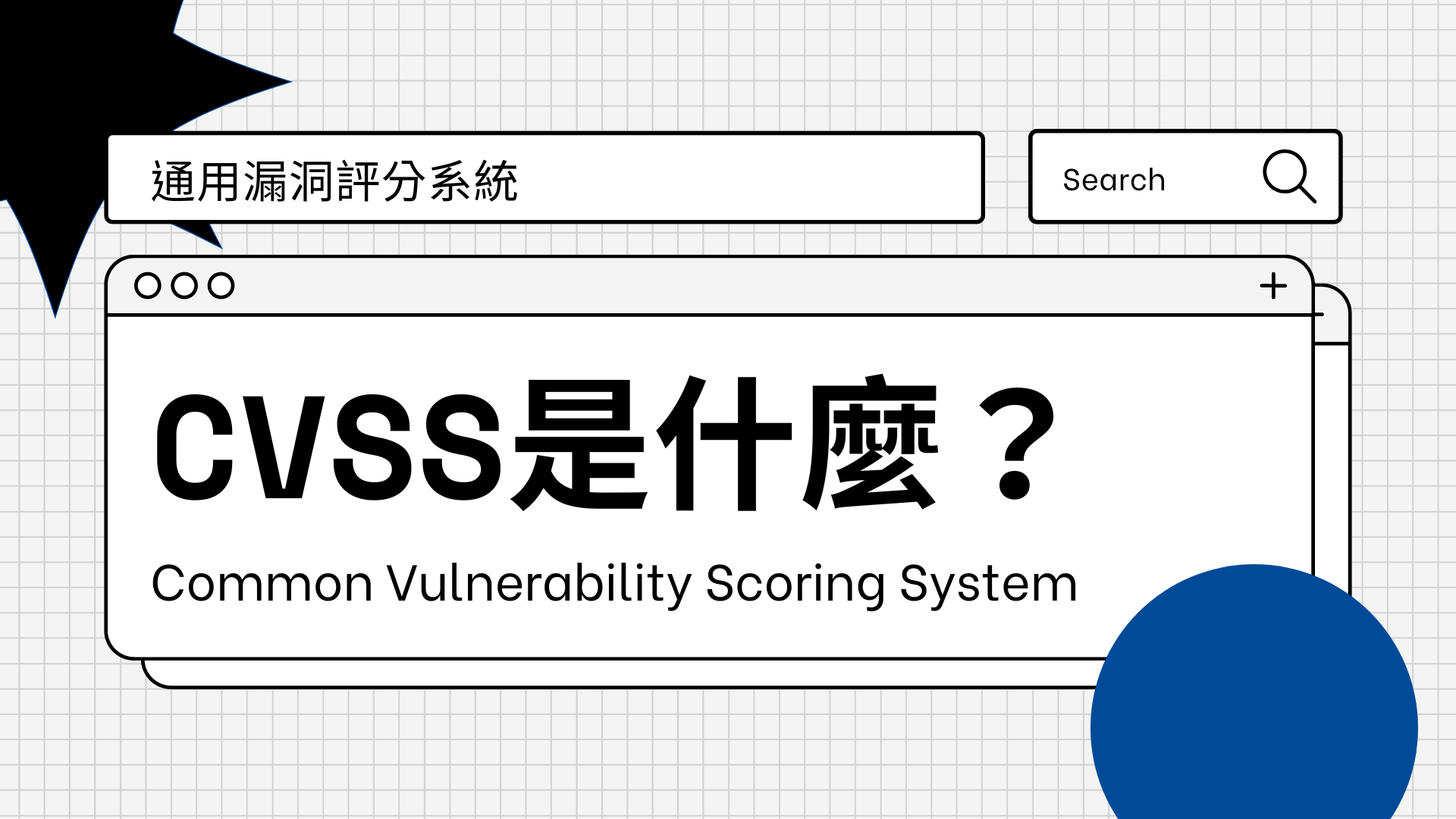
What is the True Cost Performance?
July 8, 2021
What is cost performance?
One of the most famous words used in business is "Cost Performance". Cost performance is an indicator which shows the ability to deliver performance over a certain cost. Sometimes we might say cost benefit, cost effectiveness or price performance.
Cost performance is a good indicator to show how efficiently business operations are operated. Higher performances with less cost will lead to more profits. For example, if you are selling hotdogs, it is obvious that it would be cheaper to buy a certain amount of sausage packages at once rather than going to the supermarket and buying a sausage package one by one. Of course, with bad predictions of the market demand, the performance may become worse by buying too many sausage packages. But in general, with decent predictions of the market demand, cost performance will be better with purchasing the right amount at once.
Difficulty of evaluating cost performance
In order to evaluate the performance of two different methods, it is easy to just compare the outputs. However, in the real world, if the task is done in a different method, there will be additional effects for each method other than the output itself. Therefore, evaluation of performance might be different depending on how the person or organization values things.
For example, let's say a salesperson would like to deliver product information to their lead customers. The salesperson can send emails to all of the lead customers at once, or the salesperson can call each lead one by one. Both ways can achieve delivering information to lead customers. And if we compare the cost of delivering information to lead customers, sending emails at once will be cheaper since it takes less time compared to calling. If we look at only this fact, sending email seems to have better cost performance. However, since the additional effects by each method is different, if the salesperson sends out all the emails at once, the salesperson may know who clicked the email, yet it is difficult to know how much the lead customer is interested in the product. On the other hand, if the salesperson calls the lead customer, the salesperson can ask more questions to know how much the lead customer is interested in the product.

When we compare cost performance, since not only cost but also effects by each method will be different, it will be important to evaluate the pros and cons. Pros and cons will be different depending on the situation. If the company already has a strong brand and awareness of the product, sending emails all at once might just be good enough. If the product is fairly new and if the company would like to know how people think about the product, calling might be the better option. In reality, many companies combine different methods to achieve better performance.
Pitfall of evaluating cost
It is easy for us to focus only on the expense fee as cost, since price is always a number and can be easily calculated. However, cost is not only about the money spent, but also the amount of time and human resources needed to be input.
Let's say you would like to have a sandwich for lunch. You can just go to some shops to buy sandwiches. Or, you can go to the grocery store to buy ingredients and make sandwiches by yourself. Buying sandwiches may cost more but it is faster, and it doesn't take a lot of effort to buy a sandwich. On the other hand, it may cost less to buy the ingredients to make a sandwich, but it takes more time and effort to do so.
In business, every employee has a salary that can be divided by time. Therefore, we can calculate the amount of money spent on completing each task by dividing the human resource fee with the working time. Therefore, the total cost of a certain project not only includes the actual hardware fee itself, but also includes the amount of time and human resources that needed to be input.

The tricky part about calculating the cost of human resources is that for a company, once a company employs a person, there will be a basic salary that needs to be paid consistently no matter how the person works. Therefore, even though the time and human resources needed to be input to perform a certain task might be less, unless there are other tasks in which those human resources are needed, the cost performance might not be improved. Of course, there can be an employment contract based on the true performance. But, let me ignore those cases for now.

In general, if you replace manual processes with more automated processes, cost performance should be improved. The reason is simple. Automated processes can run 24 hours without any rest time as long as the process does not need to be maintained. Plus, in many countries, there are regulations that a company can not ask employees to work for really long hours. But there is no regulation for running automated processes for a long time.
Benefit of SaaS
It's been quite a while since the SaaS business was introduced to the market. From the beginning, there were always discussions on whether cost performance of SaaS services are good or not. Usually the benefits of SaaS are said to be that a user company doesn't need to own the physical servers, doesn't need maintenance, and can purchase only the necessary licenses. In contrast, the fee of licenses is more expensive compared to running some softwares on an existing server. Sometimes people say that SaaS services can not be customized so that it will not fit to their business process.
I believe all of the pros and cons stated above are true. Because how you evaluate cost performance depends on how you value the performance and how you think about the total cost. And, evaluation will be different by companies depending on their business situation, their business environment and their business values.
However, I see a new benefit of using SaaS services recently. Today, there are so many SaaS services on the market. Many SaaS services try to solve certain problems with their own different approaches. For example like a ToDo management service, some may manage ToDos in lists and some may manage in tile way. Some may have their own app and some maybe just an add-on app to some other major SaaS services.
The point is that you will never know which way will really fit your business operation. Since it is easy to switch between different SaaS services with little cost, it is possible to try out many different ways to improve performance and choose the solution which suits the best. Although customizing may sound like the best way to match the business operation, it is difficult to tell beforehand whether a customized solution really matches the business operation without using it. Plus, customization usually will cost more in expense, time and human resources which makes it difficult to replace the solution once it is made.
Regarding the fact that the business environment is changing quickly and needs to be modified constantly, I am starting to think that finding a solution best suits the current situation and switching to the better solution in the course of time might be the best way to achieve the best cost performance.
喜歡這篇文章嗎?歡迎分享出去!






